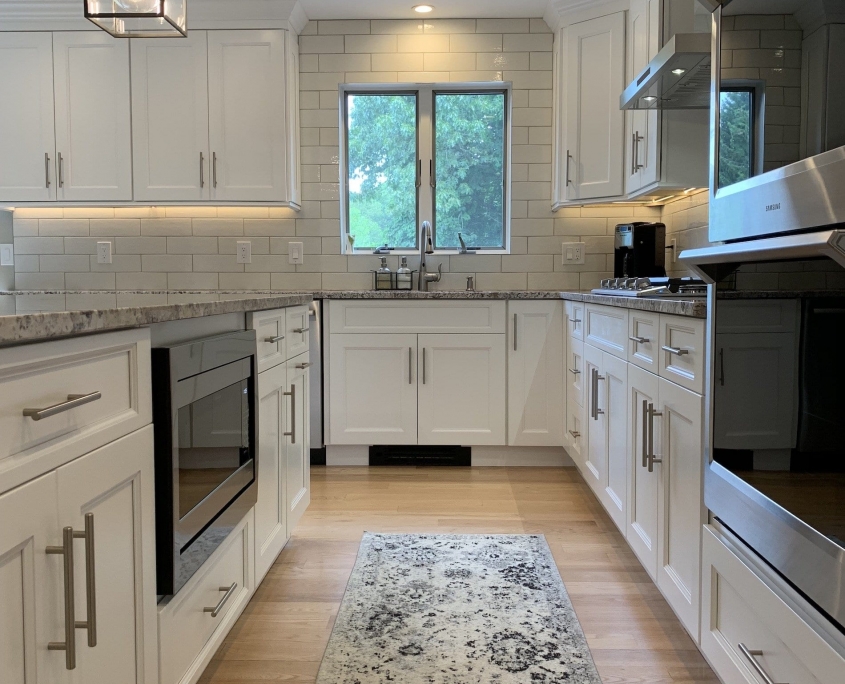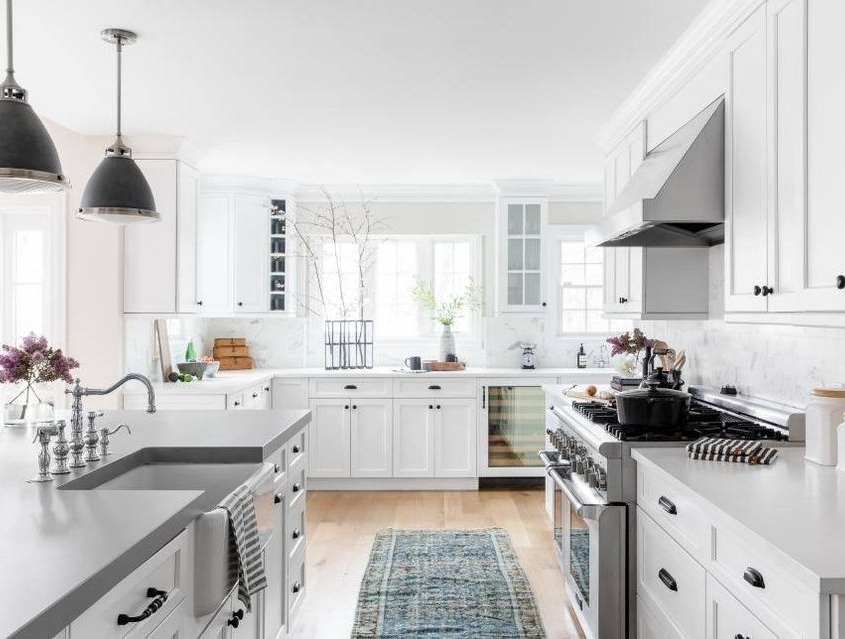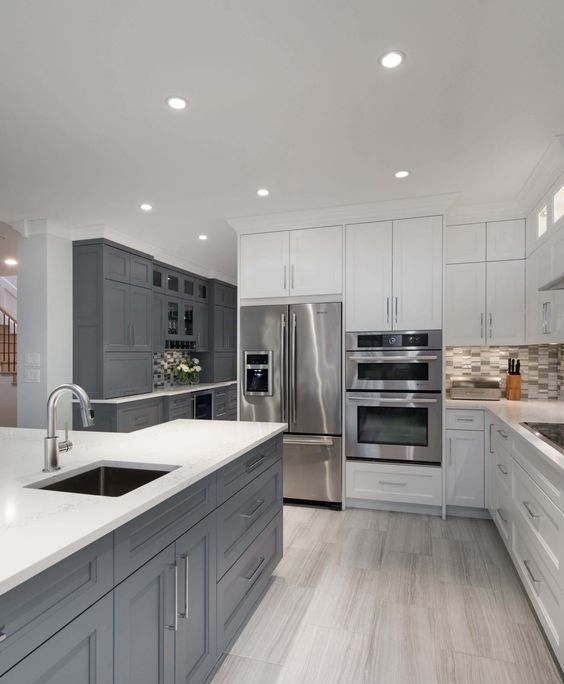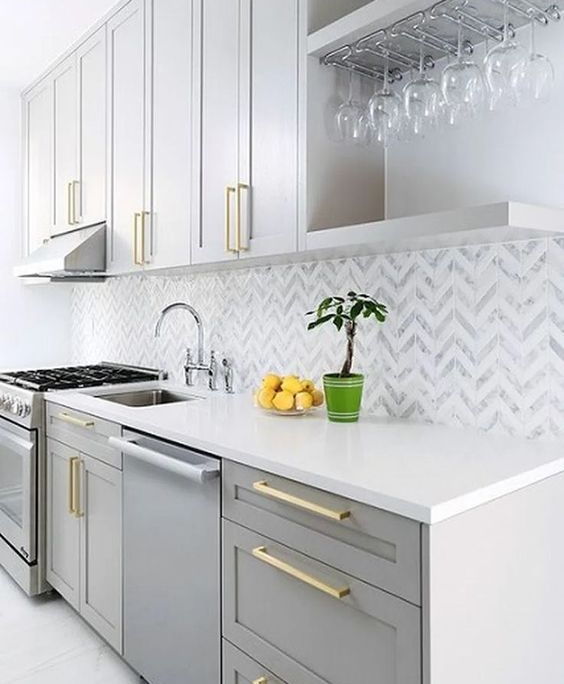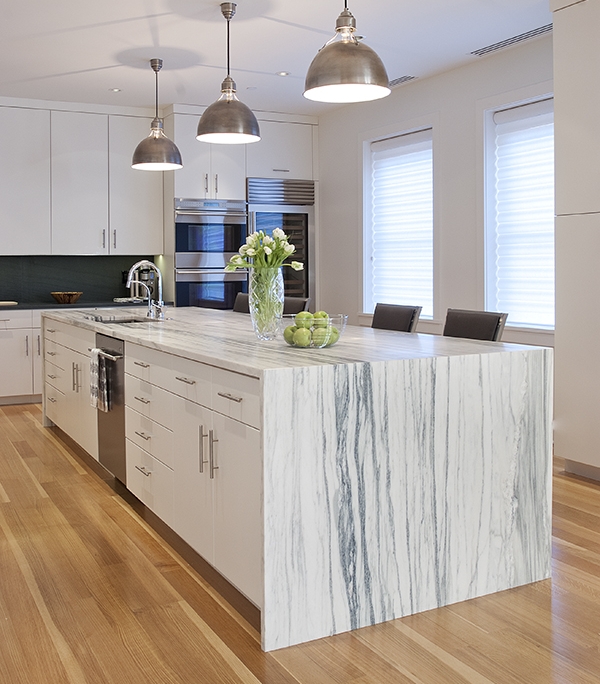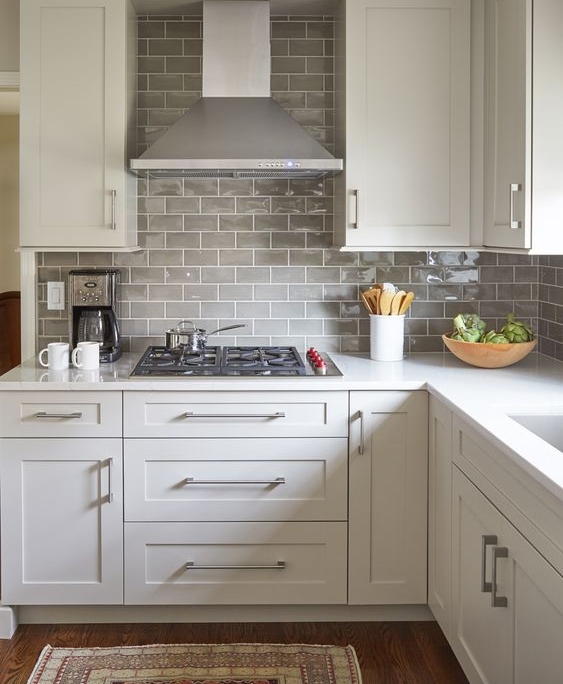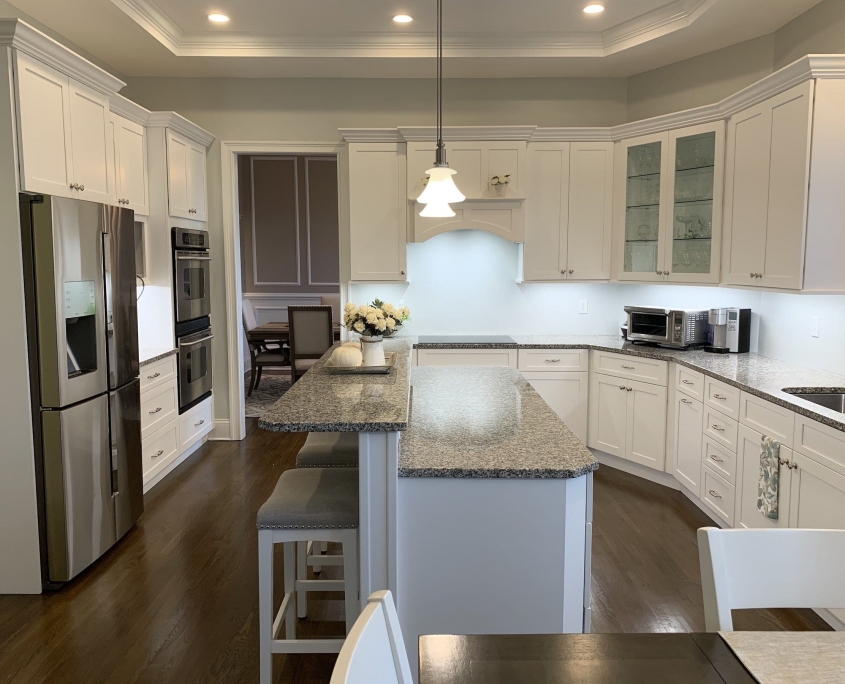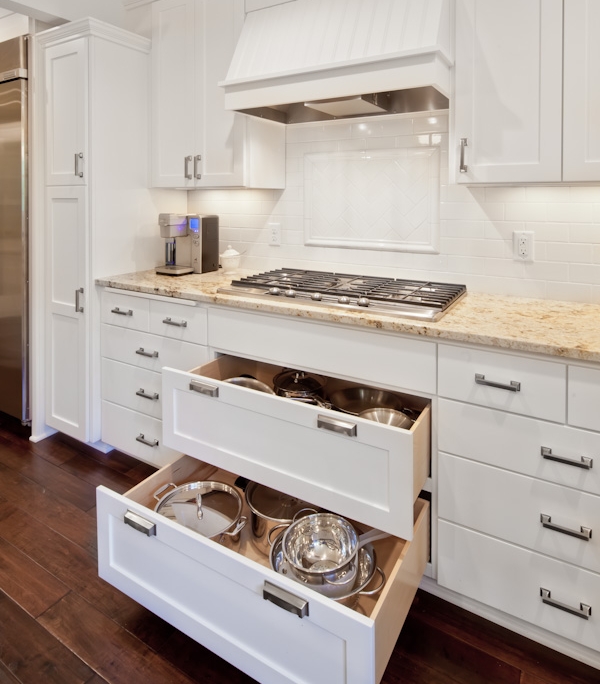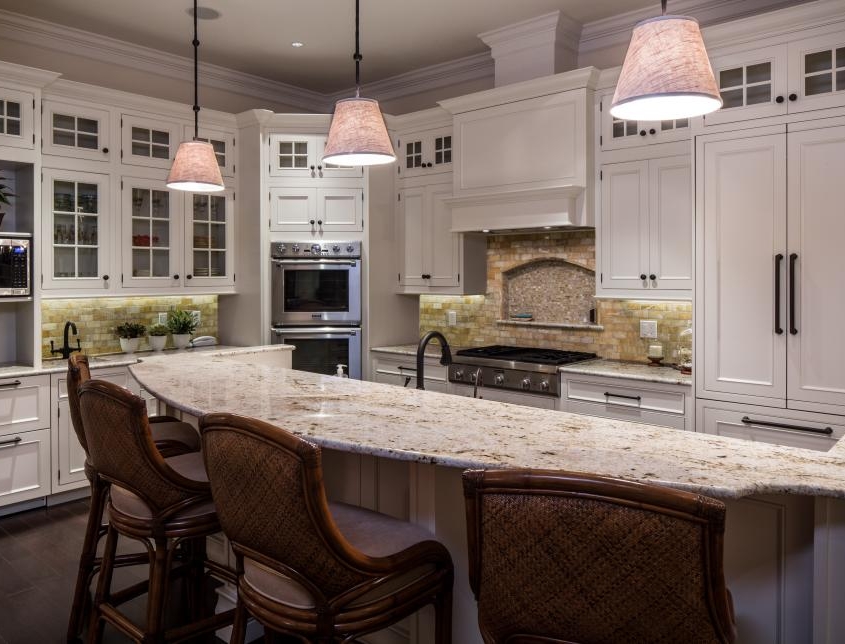The kitchen is the most expensive and challenging room to build or remodel. But it’s where everything happens—talking, cooking, scheduling—so it’s important to make the kitchen layout functional, comfortable, and attractive. Making sure your kitchen design layout works for your family requires more than simply selecting beautiful finishes.
You’ll also need to make smart design decisions that create a safe and accessible space. Here are some basic planning guidelines to help you with the key elements of kitchen design floor plans.
Space Planning
One of the most difficult parts of designing kitchen layouts is logistics. Where does everything go? The clean slate of a new kitchen can be overwhelming. In a remodel, limitations might include square footage and existing plumbing placement (relocating plumbing is typically not a cost-effective option for most upgrades). To begin designing your kitchen, take exact measurements of available floor space, then place the basic elements.
Doorways and Walkways
Any doorway into the kitchen must be at least 32 inches wide, and swinging doors shouldn’t interfere with appliances, cabinets, or other doors. In a small kitchen, hang doors so they swing out, rather than in, to avoid clearance problems. Passageways through the kitchen should be at least 36 inches wide (or desirably larger if you’re building an open floor plan kitchen). In work areas, walkways should be at least 42 inches wide for one cook or 48 inches for multiple cooks.
Work Triangle
The work triangle is an important design concept that improves a kitchen’s functionality by minimizing walking distance between the sink, refrigerator, and primary cooking surface.
For comfort and safety, the sum of the three distances should be no more than 26 feet, and each stretch of the triangle should measure between 4 and 9 feet, even with small kitchen floor plans. If two or more people cook at the same time, plan triangles for each cook.
These triangles might share one leg, but they should not cross each other. Also, try to avoid having major traffic walkways cross through the triangle.
Sink and Dishwasher
Flank any sink with landing areas of at least 24 inches on one side and at least 18 inches on the other. In small kitchen layouts, this may be achieved with a rolling kitchen counter cart. If your kitchen will have a secondary sink, allow at least 3 inches of countertop on one side and 18 inches on the other.
Install the nearest edge of the dishwasher within 36 inches of the nearest edge of a sink, preferably the primary prep sink. Also, leave at least 21 inches between the dishwasher and any adjacent appliances, cabinets, or other obstacles.
Counters
Designers recommend that a kitchen include at least 158 total inches of the usable countertop, which is considered any span, including islands, that is at least 24 inches deep and has at least 15 inches of clearance above. It’s recommended to include at least a 24-inch-wide span of countertop next to a sink for prep work.
Plan for at least 15 inches of countertop beside the handle side of the refrigerator or on either side of a side-by-side refrigerator. Allow at least 12 inches of countertop on one side of a cooking surface and 15 inches on the other.
For kitchen layouts with island appliances, also extend the countertop at least 9 inches beyond the burners. For a separate oven, include a 15-inch span of countertop on either side. When these countertop areas overlap, take the larger of the two guidelines and add 12 inches.
Seating
When a countertop double as a seating area, a 28-30-inch-wide space per diner is most comfortable. Also plan for 18-inch-deep knee space for 30-inch-high counters, 15 inches for 36-inch counters, and 12 inches for 42-inch counters.
Allow a 36-inch clearance behind chairs or stools, measured from counter/table edge to the wall or obstruction. If there is a walkway behind the diner, allow 44-60 inches in the kitchen layout for comfortable passage.
Electrical and Ventilation
All receptacles servicing countertop areas require GFCI (ground-fault circuit interrupter) protection. A kitchen must have at least one wall-switch controlled light, with the switch placed at the entrance. At least 8 percent of the total square footage of the kitchen must be windows or skylights. It’s also important to have task lighting over every work surface.
For all cooking surface appliances, install an outdoor-venting kitchen ventilation system with an exhaust rate of 150 cubic feet of air per minute. Install range hoods or microwave-hood combos at least 24 inches above a stove or according to manufacturer instructions. If a microwave is placed below the countertop, the bottom must be at least 15 inches off the floor. Allow 15 inches of clear space above the refrigerator.
Safety Issues
The kitchen design layout has the potential to cause harm, even fatal, injuries with the danger of fires, scalding, cuts, and falls. Protect your family by keeping a fire extinguisher visible, easily accessible, and away from cooking equipment. Make sure the extinguisher is rated for Class B fires, test the equipment at least every six months, and make sure everyone in the family knows how to use it.
Don’t place a cooking surface under an operable window and never use flammable window treatments above a stovetop or oven. Also, choose clipped or rounded corners for countertops, which are safer than sharp edges.
Storage and Accessories
Although building codes don’t address kitchen storage or accessories, they are nonetheless important concerns. Designers recommend a rough guideline of including a minimum of 117 feet of shelf and drawer frontage for small kitchen design layouts and at least 167 feet in a large kitchen (greater than 350 square feet).
